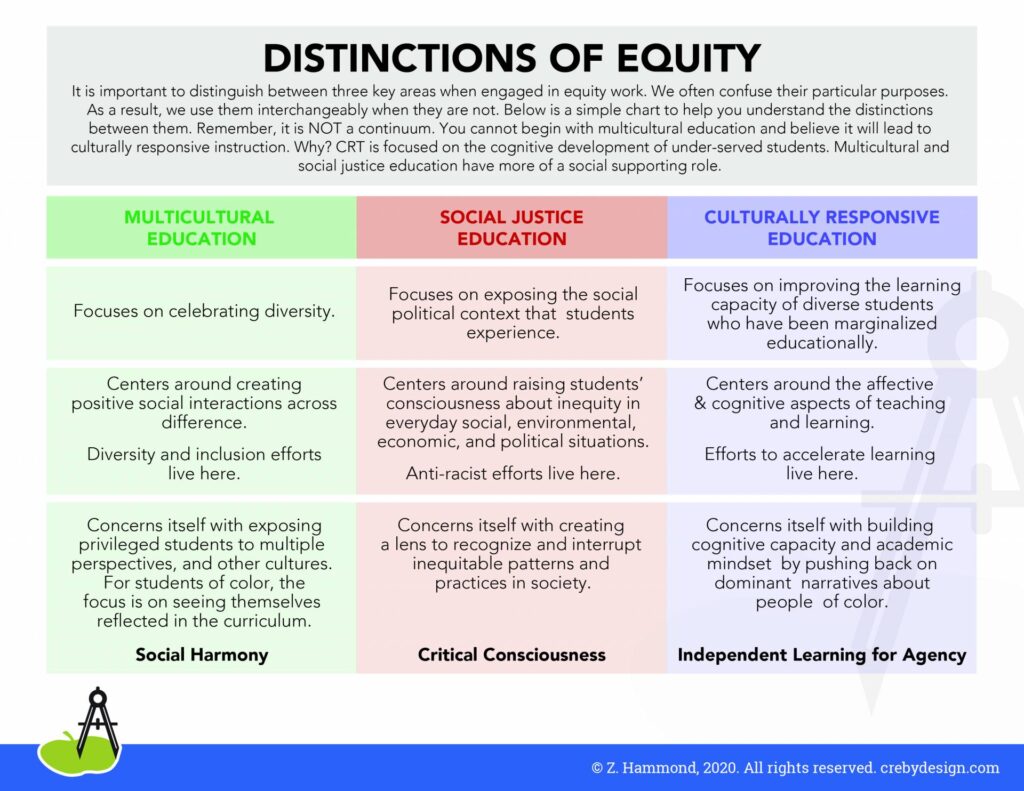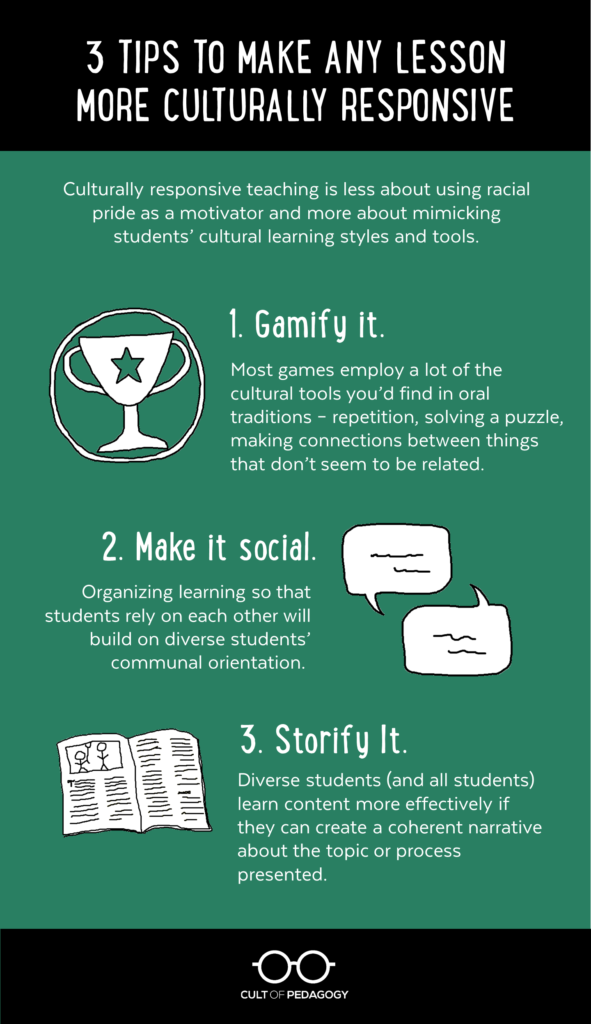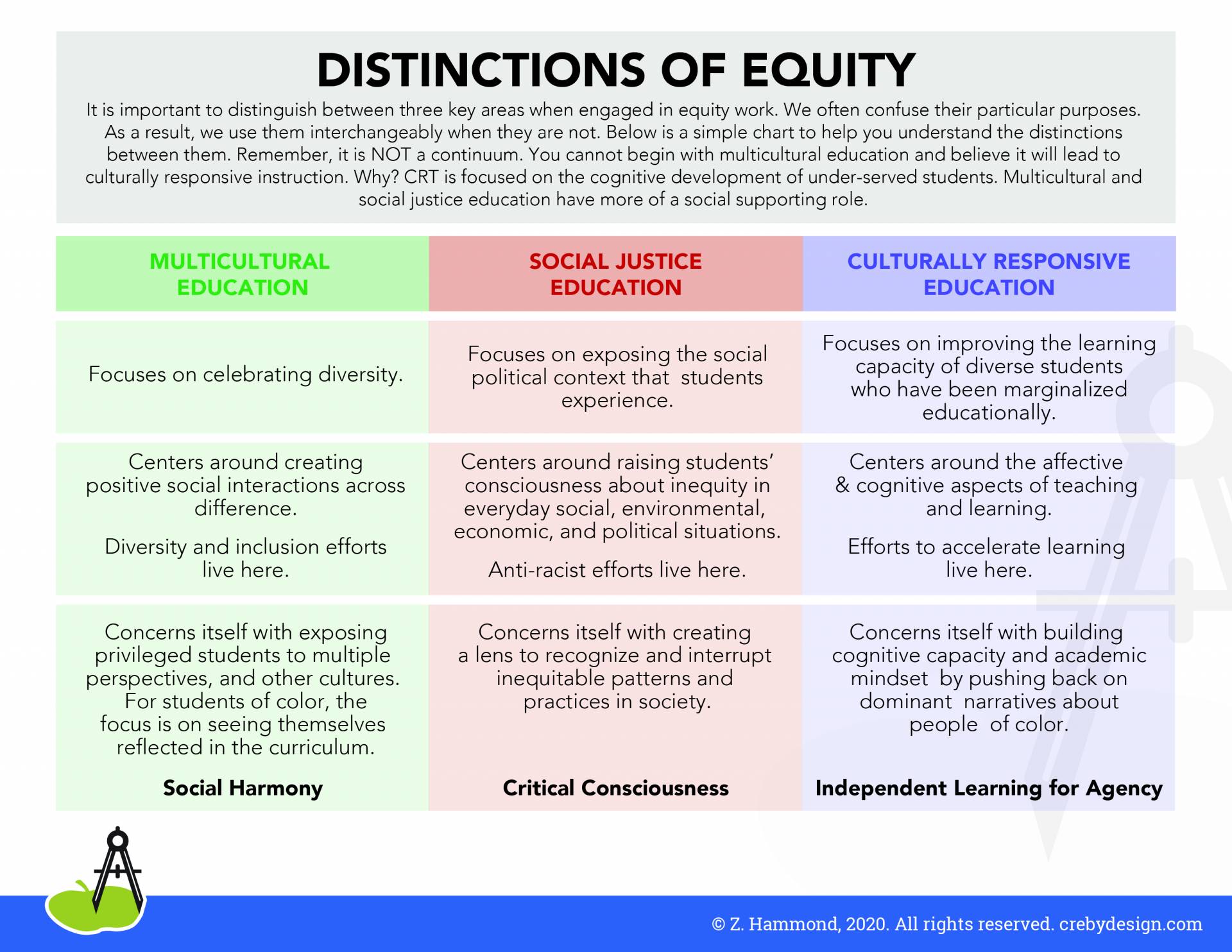This week, I decided to take a look at how we can work towards culturally responsive pedagogy (CRP) in online/blended classroom settings. I thought it would be beneficial to reflect on ways that Curtis and I can make our blended course on Treaty Education and Minecraft more culturally responsive.
These are the four articles I read:
- Culturally Responsive Teaching in the Online Classroom – ELearn Magazine
- How to Develop Culturally Responsive Teaching for Distance Learning – KQED
- Online Teaching Can Be Culturally Responsive – Learning for Justice
- 3 Tips to Make Any Lesson More Culturally Responsive – Cult of Pedagogy
Three of these articles draw on the work of Zaretta Hammond, author of Culturally Responsive Teaching & The Brain.
Some of the articles also draw on the work of Dr. Gloria Ladson-Billings and Dr. Geneva Gay.
What is Culturally Responsive Pedagogy (CRP)?
According to Dr. Ladson-Billings, as cited in this article, the foundation of culturally responsive teaching rests on three main criteria:
- Academic achievement – CRP means having clear and challenging academic expectations for all students. Educators use a variety of assessments and are highly skilled at creating effective learning environments.
- Cultural competence – Students and teachers demonstrate a deep understanding of their own and others’ cultures.
- Sociopolitical consciousness – Educators must continually examine their own worldviews, cultural perspectives, and biases to ensure they create environments that are supportive to all learners.
This article, citing Zaretta Hammond, states that culturally responsive teaching should:
- Focus on improving the learning capacity of students who have been marginalized educationally because of historical inequities in our school systems.
- Center around both the affective (emotions/feelings) and cognitive (acquiring knowledge) aspects of teaching and learning.
- Build cognitive capacity and academic mindset by pushing back on dominant narratives about people of color.
Here is one more definition from Dr. Gay:
What’s the Difference Between Multicultural Education, Social Justice Education, and Culturally Responsive Education?
I found this chart on the distinctions of equity to be very helpful:

I have understood that multicultural education is not a sufficient approach to equity work for a while now, but I always thought that social justice education (or anti-oppressive education) should be the goal. This chart says that multicultural and social justice education both play supporting roles to culturally responsive education.
I still think we need to help our students develop critical consciousness (sometimes called sociopolitical consciousness) through social justice education so they understand power, privilege, and systems of inequality and work towards anti-racism/anti-oppression. Culturally responsive education is more focused on helping marginalized students improve their learning capacity and become independent learners.
“Culturally responsive instruction doesn’t mean you’re only mentioning issues of race and implicit bias,” she said. “It means that you’re also focused on building brainpower by helping students leverage and grow their existing funds of knowledge.”
– Zaretta Hammond, as cited in this article
CRT is about mimicking students’ cultural learning styles and tools. This is important because students from oral cultural traditions are used to making meaning in oral, active ways, so CRT means using those cultural strengths as tools in the classroom.
Strategies and Reflections on CRP in the Online Classroom
Strategies
Reflections
Make it Relevant
Textbooks and curriculum are often designed for majority cultural groups. We must ensure learning activities are relevant to students’ lives and experiences. This also means using curriculum materials that are reflective of diverse identities. (Source)
I think our Treaty Ed and Minecraft course is relevant to students because almost all the students we are working with play Minecraft outside of school. We are using books and videos that are reflective of diverse identities and are working on getting access to more authentic representation within Minecraft. I think at this point, some students don’t feel that Treaties are relevant in their lives, but we are hoping that as we progress through the course content, they will start to understand the relevance today.
Talk about Culture and Cultural Identity
It’s important to define “culture” with students and have introductions that include cultural identity and background. They suggest that instructors describe their own cultural backgrounds to model this. (Source)
This is something we can work on in our Treaty Ed and Minecraft course. We have briefly talked about where our ancestors are from, but this isn’t something we have spent much time on. This will be especially important when we get to the last module and students are representing what it means to them to be a Treaty partner.
Use a Variety of Assessment Tools
Assessment tools should reflect students’ backgrounds and allow them to demonstrate mastery in a variety of ways. Some suggestions were performance-based assessment, portfolios, reflections, journals, blog posts, video journals, and opportunities for self-assessment. (Source)
I think we are doing a pretty good job of this one in our course so far. We are co-constructing criteria for a single-point rubric that we will use to assess students’ builds in Minecraft. Students will use the camera and portfolio tools in Minecraft to capture their learning. We are also using Flipgrid to have students explain the meaning and purpose behind their builds.
Deepen Background Knowledge
Help students connect new things to their schema or background knowledge – which comes from their home, community, and interests. Survey students to find out their interests and use that information to make learning relevant. Make sure students DO something with new knowledge. (Source)
We are connecting to student interest in Minecraft, but I don’t know if we are connecting to student interests in other areas. I am wondering about surveying students for some of their other interests that we might be able to bring into mini-lessons or build challenges in some way.
Cultivate Cognitive Routines
“Be the personal trainer of their cognitive development”- Zaretta Hammond
By this, she means to have a routine set of prompts that become a regular part of the way students think. For example: What’s the relationship or connection between these things? She also suggested encouraging students to sketchnote or doodle to actively process what they are learning. (Source)
I think we could focus on a few guiding questions and use them more regularly to develop this cognitive routine. For example, “How is what you are building connected to the build challenge for today? How does building ___________ show a reason for making Treaties?” This might help students get into the habit of explaining their thinking, which we are asking them to do using signs/boards in their Minecraft worlds.
Build Learning Partnerships
High-trust, low-stress environments can help marginalized students effectively process and retain learned information – Zaretta Hammond. Safe and trusting environments make it more likely that students will take risks in their learning. Whether online or blended, we can create this trust by taking time to talk with students about their lives and facilitating sharing/team building activities. (Source)
Because we are consultants and don’t have our own classrooms, we have to find creative ways to build relationships and trust with students in short periods of time. So far, I have found the best way to do this is in our check-ins with groups while they are building in Minecraft. Those 10 minute check-ins have given me a chance to talk to students, start to get to know them, and give feedback on their ideas in a safe space.
Center Students Online
Create trusting learning partnerships with students. Teachers should act more as facilitators than lecturers. This includes giving students choice, asking what topics are important to them, asking for feedback on types of learning they enjoy most (projects, games, Flipgrids, etc), and designing lessons around student interests. (Source)
We are giving students choice in what they build to represent their learning and who works on what within their groups. We are trying to find a balance between giving choice and still having sufficient structure/guidelines so we are holding students to high academic expectations.
Support Communal Learners
Hammond explains that our cultural values can shape whether we learn best by exploring on our own (individual learners) or collaborating with others (communal learners). Communal learners can struggle with traditional distance learning (ex: learning packages, independent online projects). It is important to make lessons social, use breakout rooms for small groups, and ensure students have time to check in with their teacher and friends. (Source)
Our course is very supportive of communal learners because most student work time is spent collaborating in small groups. I think using Minecraft to represent learning is definitely a gamified approach!

What are some ways you could make your course prototype more culturally responsive? What are some challenges to culturally responsive teaching in an online environment? What did you think about the distinctions between multicultural, social justice, and culturally responsive education?
Looking forward to hearing your thoughts on this important topic!
